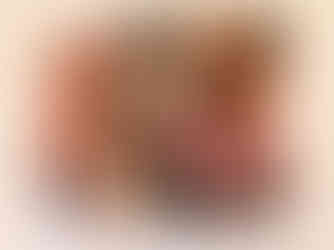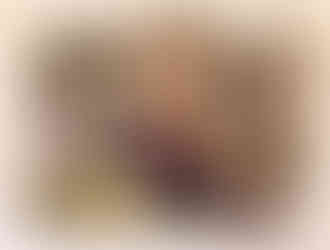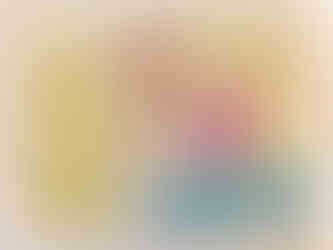Collage Development
- Amelie Nicholson
- Sep 20, 2020
- 5 min read
Updated: Sep 23, 2020
To begin with, our brief was to create a 'human' made from given images of body parts and natural imagery. I started by tearing the images into smaller pieces that could blend into each other- for example, by splitting the fairly symmetrical face and butterfly down the middle. I put these together with the intention of blurring the boundary between human and nature, by having the flowers and butterflies become part of the body. I wanted to demonstrate that humanity comes from nature and we should have a harmonious relationship with the natural world. In some of the collages, this is being disrupted by the arm/hand of another figure, which could suggest that the wider society has become detached from nature.

I chose my final 'human' (pictured above) because it shows how humans come from the natural world and are one with the environment. The body stems from the natural imagery to demonstrate how we have grown and been shaped by our surrounding environment. The separate arm is reaching into the brain of the natural human, to demonstrate how individuals are exploited for their original thoughts and ideas by the wider society/their oppressors.
To develop my collage, I incorporated the 'human' I made into the given context image. The image is of a woman and her child walking through some makeshift houses in a foreign country. It made me think about how resourceful the people had been to build their houses from what seemed to be found materials, and also about the reasons behind the extreme poverty in certain countries. After some research, I found that many less economically-developed countries has previously been colonised by European countries and had been left with few resources and corrupt governments when they gained independence. Ultimately, western countries have caused the poverty that leads to emigration and asylum seeking in developing nations. I also explored the idea of globalism and the 'brain drain', which is when educated people move to more developed countries for a better quality of life, leaving the LEDCs with fewer resources. These ideas fit well with my 'human', because the white hand seems to be stealing from the black man, who has grown from both nature and his surroundings.
To present these ideas, I experimented with words and font, which I created using different thicknesses of sticks in ink. I incorporated a news headline of a tragedy in a refugee camp to demonstrate the devastating impact that globalisation/colonisation has had on the people of LEDCs. I also added some embroidery to show the man's brain spilling out of his head, to emphasise the idea of the 'brain drain'. This adds a 3D element that makes it look like the hand could physically grab the thoughts of the man- therefore bringing the metaphor to life and giving it a bigger impact.
In further experimentations, I created heat transfer prints of my collage. I layered colourful pigments onto a copy of my collage, which were repelled by the ink and so created an inverted effect. The colours became very vibrant in the heat press and I like how this represents the bright cultures of the developing countries I researched. I like how the words have printed backwards, which distorts the image and creates a sense of confusion. Along with the positive, bold colours, this creates a juxtaposition between the seriousness of the issue and the playful aesthetic of the print. This could symbolise how the issues of globalisation are not taken seriously enough by western countries. I like how the pigments have bled and created spots over the lighter parts of the print (especially on the reverse), as this gives the impression that the image is makeshift and imperfect- much like the houses in the collage. To create a stronger message, I could flip and invert my collage before making a copy because this would preserve the original image.

When developing my collage, I decide to change the wording because I wanted to focus on how our surroundings shape us. I wanted to present the often overlooked story of people from deprived areas in LEDCs, and show that every story is worth telling because they shape our thoughts and ideas. I also juxtaposed this with the 'prove your worth' sign, which stems from the idea that humans often feel insignificant and therefore that our feelings are invalid. This links with the hand in my collage, which seems to be inspecting the man's brain- much like society judges people who have unconventional ideas. I could also add embroidery to make the sign stand out and to physically show the brain being examined.
I refined my final collage by reducing the amount of wording and natural imagery because I thought it could be distracting. Instead, I layered the 'prove your worth sign' over a border control sign to link to the idea that migrants from less developed countries are discriminated against by western nations and have to 'prove' the value they bring to the country. I decided to make the piece into a triptych to expand on my idea that our surroundings influence our thoughts and also our power to express them. It begins with the man from the LEDC whose thoughts are undermined and examined to prove they have any value. Then it moves on to a woman from the suburbs of a European country. In this collage I included links to religion and a group of people holding a banner to show that the woman's views are widespread and she can express them with little judgement. This collage represents the majority of people, who tend to have mainstream ideas but have limited power to put their thoughts into action. For example, the women in the corner have resorted to protesting/parading to express themselves. Finally, I have created a collage that represents the ruling classes, who are born into power and wealth so they don't have to 'prove' their ideas to anyone. I have used stereotypically upper-class English imagery that is a stark contrast to the first collage. The woman seems more reserved and sophisticated than the other characters, which is expected of a person of that upbringing. I included an image of 10 Downing Street because it symbolise the British government and is iconic worldwide due to Britain's powerful position. In this final collage, the woman has power to express her views and oppress the views of others- for example the man in the first collage who is discriminated against by a white institution.
Finally, I created heat transfer prints out of my triptych. I used layers of bold pigments to make flipped and inverted copies of my collages. This distorted my images and left patches of colour that make the prints seem more like childish patterns than collages with serious messages. I wanted to add a sense of confusion and juxtaposition into my work to reflect how ludicrous I find it that a person's thoughts become more significant if they are born into a certain way of life. I still preserved the important elements of each collage (the border sign, the banner, and the door) but made them into more decorative images, to undermine their impact on society. My original collages are based around stereotypes so these prints mock the preconceptions society has about people from certain (less economically privileged) areas.
I would like to explore the idea of human insignificance further in my work, along with how our environment impacts our thoughts. I have enjoyed experimenting with collage and heat transfer and could take these further in future work.





































Comments